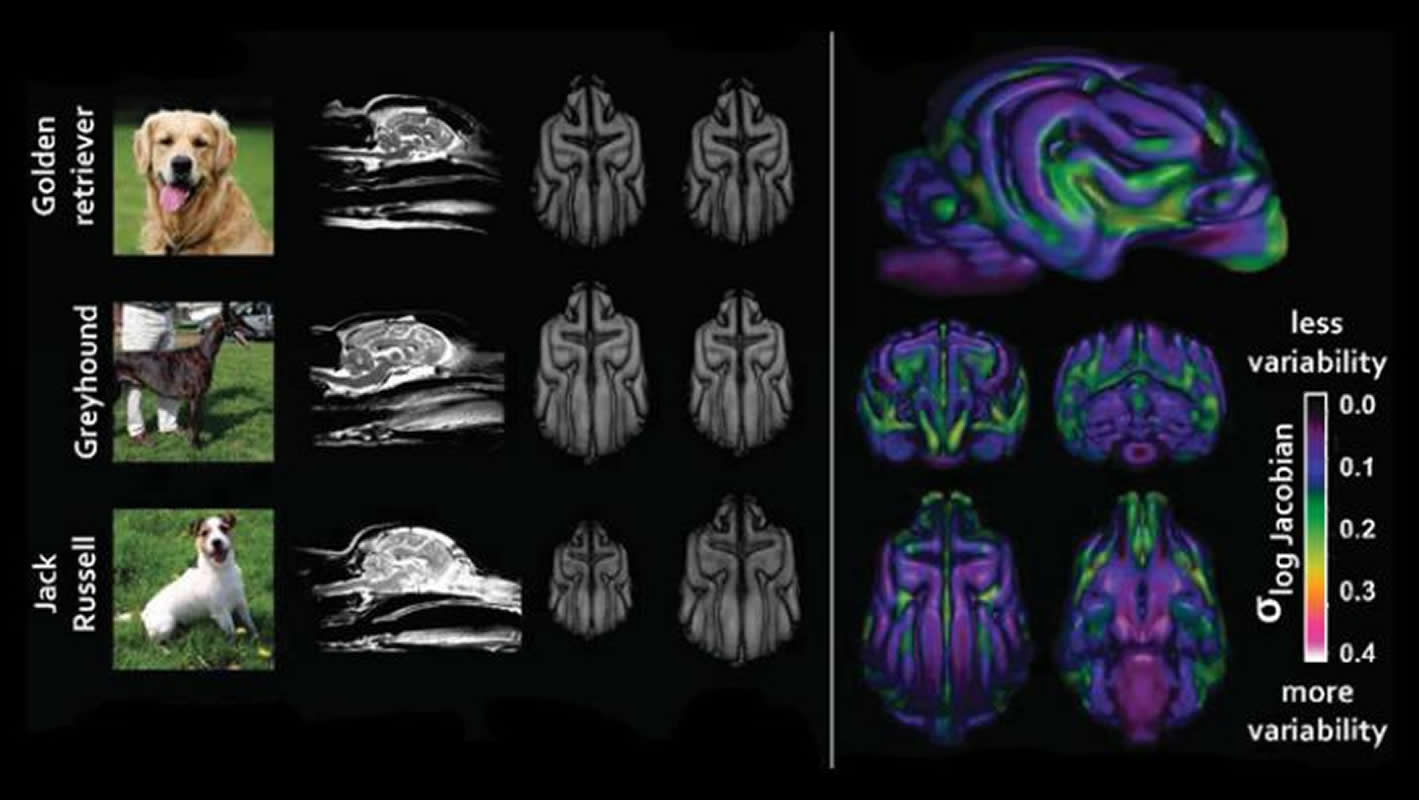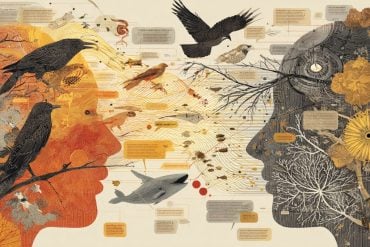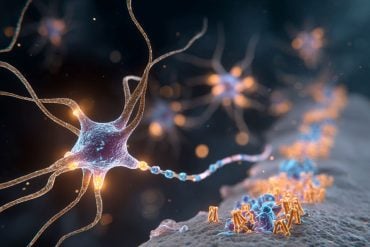Summary: Selective breeding has altered brain anatomy in dogs. Neuroimaging of 33 dog breeds revealed brain structures varied across breeds, and the variations are associated with specific behaviors.
Source: SfN
Dog brain structure varies across breeds and is correlated with specific behaviors, according to new research published in Journal of Neuroscience. These findings show how, by selectively breeding for certain behaviors, humans have shaped the brains of their best friends.
Over several hundred years, humans have selectively bred dogs to express specific physical and behavioral characteristics. Erin Hecht and colleagues investigated the effects of this selective pressure on brain structure by analyzing magnetic resonance imaging scans of 33 dog breeds. The research team observed wide variation in brain structure that was not simply related to body size or head shape.
The team then examined the areas of the brain with the most variation across breeds. This generated maps of six brain networks, with proposed functions varying from social bonding to movement, that were each associated with at least one behavioral characteristic. The variation in behaviors across breeds was correlated with anatomical variation in the six brain networks.

Studying the neuroanatomical variation in dogs offers a unique opportunity to study the evolutionary relationship between brain structure and behavior.
Source:
SfN
Media Contacts:
Calli McMurray – SfN
Image Source:
The image is credited to Hecht et al., JNeurosci 2019.
Original Research: Closed access
“Significant Neuroanatomical Variation Among Domestic Dog Breeds”. Erin E. Hecht, Jeroen B. Smaers, William J. Dunn, Marc Kent, Todd M. Preuss and David A. Gutman.
Journal of Neuroscience. doi:10.1523/JNEUROSCI.0303-19.2019
Abstract
Significant Neuroanatomical Variation Among Domestic Dog Breeds
Humans have bred different lineages of domestic dogs for different tasks, like hunting, herding, guarding, or companionship. These behavioral differences must be the result of underlying neural differences, but surprisingly, this topic has gone largely unexplored. The current study examined whether and how selective breeding by humans has altered the gross organization of the brain in dogs. We assessed regional volumetric variation in MRI studies of 62 male and female dogs of 33 breeds. Notably, neuroanatomical variation is plainly visible across breeds. This variation is distributed non-randomly across the brain. A whole-brain, data-driven independent components analysis established that specific regional sub-networks covary significantly with each other. Variation in these networks is not simply the result of variation in total brain size, total body size, or skull shape. Furthermore, the anatomy of these networks correlates significantly with different behavioral specialization(s) such as sight hunting, scent hunting, guarding, and companionship. Importantly, a phylogenetic analysis revealed that most change has occurred in the terminal branches of the dog phylogenetic tree, indicating strong, recent selection in individual breeds. Together, these results establish that brain anatomy varies significantly in dogs, likely due to human-applied selection for behavior.
Significance statement:
Dog breeds are known to vary in cognition, temperament, and behavior, but the neural origins of this variation are unknown. In an MRI-based analysis, we found that brain anatomy covaries significantly with behavioral specializations like sight hunting, scent hunting, guarding, and companionship. Neuroanatomical variation is not simply driven by brain size, body size, or skull shape, and is focused in specific networks of regions. Nearly all of the identified variation occurs in the terminal branches of the dog phylogenetic tree, indicating strong, recent selection in individual breeds. These results indicate that through selective breeding, humans have significantly altered the brains of different lineages of domestic dogs in different ways.






